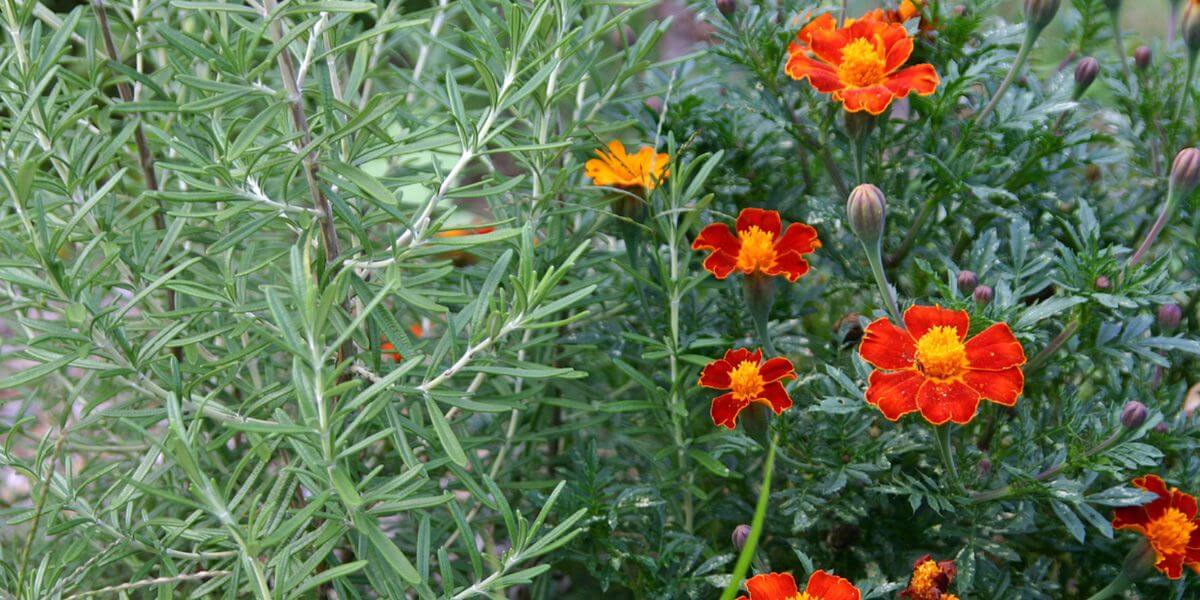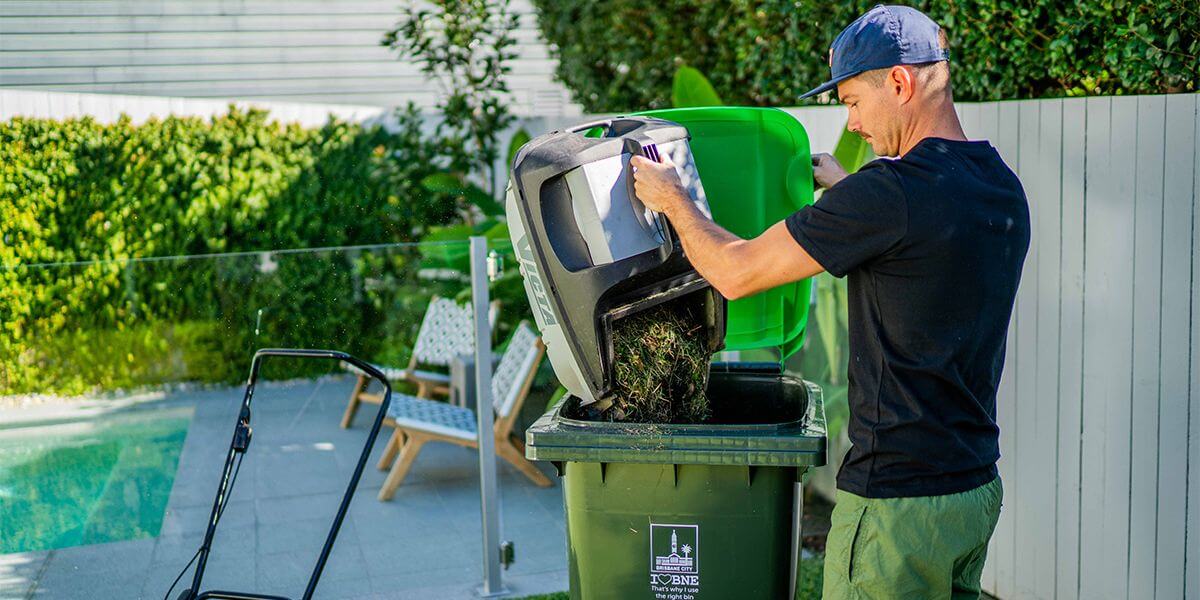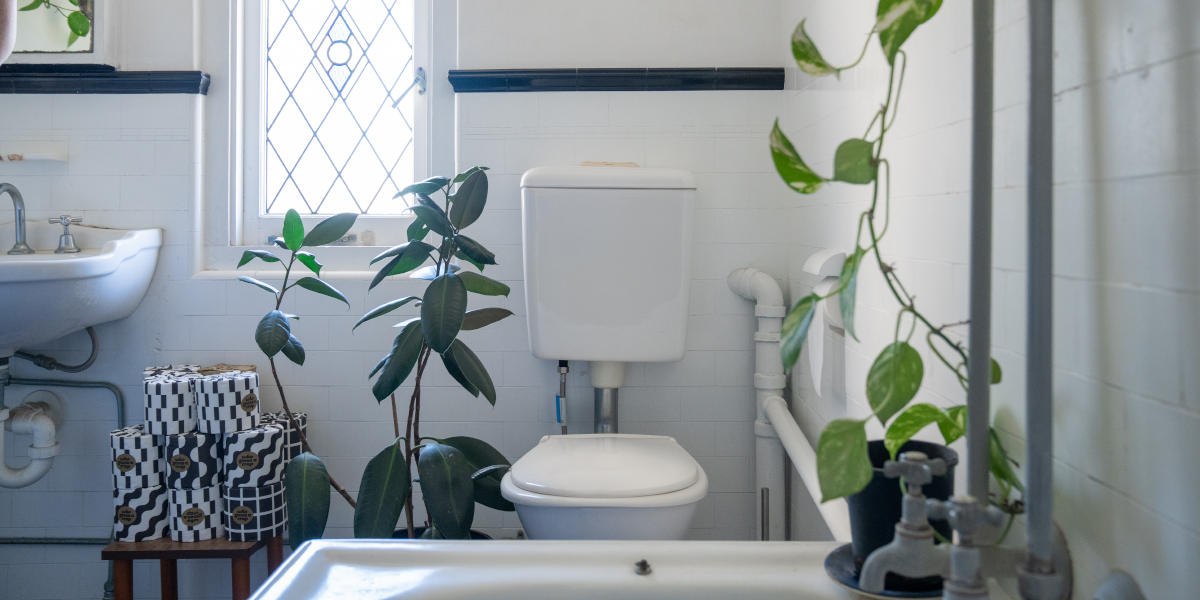GARDENING
FAST-GROWING EDIBLES FOR SPRING IN SOUTH EAST QLD
Whether you plant in the ground or in pots, horticulturalist Claire Bickle rounds up the fastest-growing veggies and herbs for the warmer months in South-East Queensland.
Spring is upon us, the days are longer, the temperatures are rising, and everything is starting to burst into new growth and bloom. So, what can you grow that will give you the most bang for buck and quickly?
Spring is a fantastic time of year to get out into the garden and get growing. Spring in the vegetable garden will see a great range of vegetables, herbs and greens being on the ready to plant list, so let’s take a look.

WHY GROW YOUR OWN?
There is nothing more rewarding than growing your own edibles whether it be herbs, salad greens, vegetables or fruit.
What you grow yourself will quite often be far more nutrient dense, completely 100% organic, cheaper and as fresh as you can possibly get.
True living cell food from garden to plate in a matter of minutes.
Whether it be in ground or in pots there are so many vegetables, herbs and greens that can be grown quickly, easily and successfully right now. With just a bit of good gardening information and knowing what to plant when, you can be harvesting in no time at all.
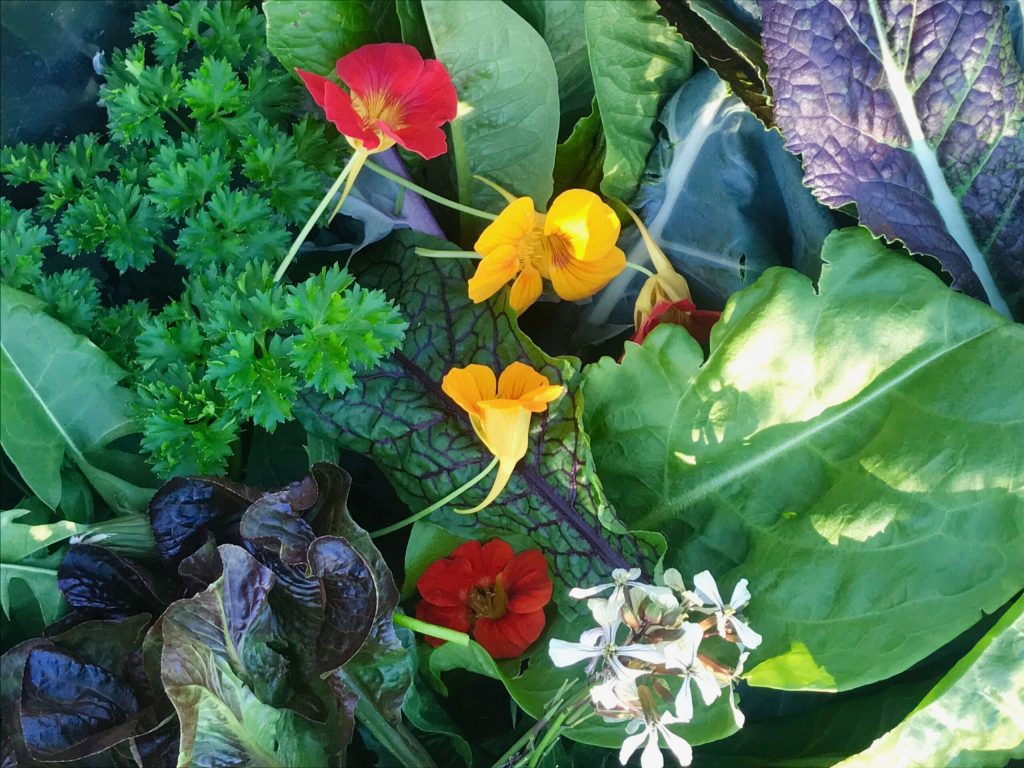
The colourful harvest chicory, sorrel, lettuce, kale, rocket, nasturtium, parsley, red mustard, dandelion.
WHAT TO GROW NOW FOR FAST HARVESTING?
Leafy greens
- lettuce: loose-leaf types
- amaranth
- rocket: wild and common
- silver beet & rainbow chard
- asian greens: pak choi, wong bok, bok choi, tatsoi, mizuna, mibuna
- subtropical spinaches: Ceylon, Egyptian and Brazilian and Kang kong
- watercress

Butterhead lettuce.
Vegetables
- radish
- beans: bush and climbing
- beetroot
- carrots: tom thumb
- chillies
- cucumbers: Lebanese and cucuamelon
- tomatoes: cherry, pear and mini roma.
- spring onions
- squash and zucchinis are reasonably swift at producing too

Herbs
- basil
- chives
- oregano
- parsley
- mints
- rosemary
- perennial Mexican coriander
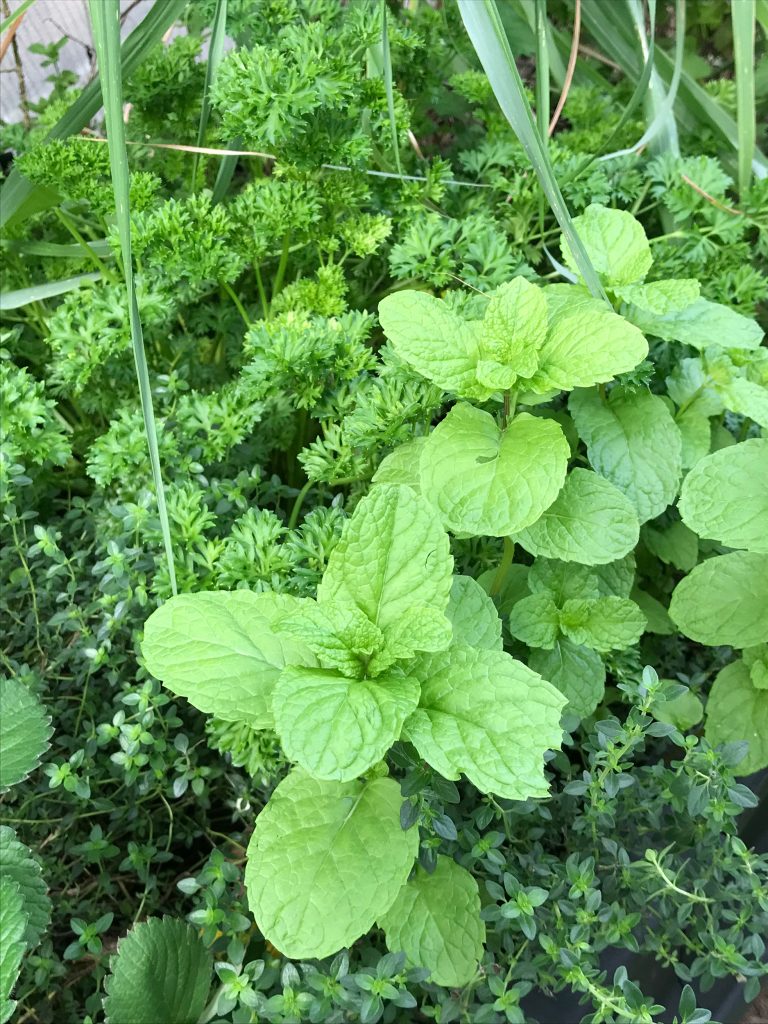
Spring is a great time to plant a range of herbs, mint, basil, thyme, parsley, oregano.
Other edibles to plant now that will take a little longer
- sweet corn
- bitter melon
- capsicum
- eggplant
- lemon grass
- rosellas
- okra
- pumpkin
- watermelon
- rockmelon
- tomatoes large
- celery
- choko
- sweet potato
- ginger
- galangal
- turmeric
- cocoyam
- yacon
Other fresh fast food choices are, mushrooms – kits, sprouts and micro-greens.

GROWING IN THE GARDEN
Choose a sunny location that receives around 5-6 hours direct sun a day.
When growing in the ground prepare the soil by adding and digging through good quantities of organic matter such as, compost and well-rotted animal manures such as cow or chicken. Then rake your garden bed soil level and water well.
Mulch the surface of the prepared garden bed with either lucerne, pea straw or sugarcane mulch.
Wait a week or so before planting if possible, to allow the organic matter to start breaking down and create good soil structure and release nutrients.
Once you’ve planted your seedlings water them in with some liquid seaweed. This will reduce transplant shock.
Then continue to water your plants every second day or so depending on rainfall and temperatures.
Giving the plants deep waterings for the first few weeks will encourage deeper root growth into the soil and long-term hardiness of the plants.
Fertilise fortnightly with a fish emulsion with seaweed and apply side dressings every few weeks of an organic manure pelletised fertiliser. Re-mulch when needed.

GROWING IN POTS OR CONTAINERS
When growing your edibles in pots, choose a good quality potting mix that has the Australian standard potting mix ticks on the side of the bag. Don’t skimp on cost when it comes to potting mix.
Once you have planted your seedlings, water them in with a liquid seaweed. Plants grown in containers will need more frequent watering and depending on weather conditions they may even need watering every day. Pot size, plant size and weather will all have an effect on watering frequencies. Just check the mix by doing the old finger test, this is where you literally poke your finger into the mix a few inches and see if it is still moist or dry.
Liquid fertilise your pots once a fortnight with a fish emulsion and apply regular applications of liquid seaweed. Seaweed is a great all-round plant health tonic and will make plants more disease resistant, drought tolerant and healthier all round.
Most potting mixes will have a slow release fertiliser in them, this will run out usually at around the 12-week mark. Reapply using a quality slow release fertiliser, preferably organic.


The author
Clare Bickle
Claire Bickle is a qualified Brisbane based horticulturist, having a Diploma in Horticulture and an Advanced Design Certificate in Permaculture Design. She has worked in multiple areas within the horticultural industry for over 20 years. She is currently the president of The Horticultural Media Association of Qld. Claire enjoys delivering Sustainable Living Seminars for the Brisbane City Council, being a guest speaker at many different Queensland gardening events and expos, presenting on the ABC612 radio – Chook Talkback and Gardening Talk back, presenting on the community tv gardening show Blooming in Brisbane and writing for many horticultural and sustainability publications such as, Earth Garden & Good Organic Gardening.


